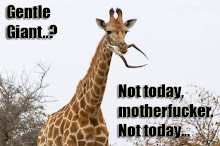Last week a client came to me with an interesting request: to create a training program that will prepare him to compete in the World Police & Fire Games in 2010. The competition consists of 8 events:
- a 3 mile run
- a 100 yard sprint
- a 100 yard freestyle swim
- max rep pull-ups
- a rope climb
- bench press (max weight, 2 attempts)
- an obstacle course
- shot put with 12 lbs
What's interesting about the event is that it requires competitors to be strong in a number of areas, some of which are complimentary and some of which are very nearly mutually exclusive. Put it this way: I've never met an outstanding endurance athlete who also had a great bench press, and I've never met an outstanding powerlifter who could also run a really fast 5k. On the other hand, I've trained some very good freestyle sprinters who can also rock the pull-ups, throws and rope climbs because all these events require high levels of explosive strength and power in the upper body. This also tends to translate to a good level of strength in the bench press, although generally speaking the athletes who really excel at bodyweight drills don't have sufficient muscle mass in the upper body to be truly world class at bench-pressing. Put otherwise, they have a high level of relative strength, but not necessarily a high level of absolute strength.
Anyhoo, in designing a training program for a multi-sport event such as this, the first thing I do is consider the motor skills needed for outstanding performance in each sport, then build a training program that emphasizes skills used in multiple sports so that the program makes the best possible use of the athlete's time. Of course to some extent the athlete is going to be developing these skills simply by practicing the sport, but supplementary training is also critical because it allows you to break down complex movement patterns into their component parts and bring up any weak areas that may be limiting performance of the movement as a whole. Just as an example, sprinting is performed primarily in the sagittal (front to back) plane of motion, but it also requires a high level of frontal (side to side) and transverse (rotational) plane stabilization and action. This is why cariocas and side shuffles are great drills for track and field athletes!
Supplemental training also plays a crucial role in injury prevention. As an athlete's training volume increases, any muscle imbalances he may have (and we've all got a few!) are going to be exacerbated. Likewise he may develop new imbalances due to the demands of his sport. Swimmers, for example, often have tight lats, pecs, upper traps and anterior delts, and weak lower traps and rhomboids, resulting in a poor level of scapular control, a less powerful swim stroke, and possibly even shoulder injury. Therefore the swimmer's dryland training program must include appropriate corrective flexibility for the tight areas and specific strengthening for the weak, underdeveloped areas. This will allow his body to withstand the stresses of intense training while also improving neuromuscular efficiency and athletic performance. Quite simply, our bodies work best when everything is in balance!
I think this is why aesthetically the bodies we admire are those that have perfect symmetry. A body where everything is in proportion tends to be a healthy, well-functioning body, and of course from an evolutionary standpoint one wants one's mate to have those characteristics!
And, yes, I'm digressing ... but the fact is, most people, even those who are committed athletes, want bodies that look good as well as bodies that perform well. This is why as far as I am concerned corrective exercise and functional training are foundational for everyone from decathletes to bodybuilders. They are elements of every program I write, whatever the client's starting point and whatever his objectives. This is not to say that they aren't highly individualized--in fact, they are probably the single most individualized component of the program because our imbalances are as unique as we are, a function of our individual biomechanics in conjunction with everything we've been doing or not doing to ourselves since the day we were born. I could be training a whole team of people to compete in the same event, yet no two would have exactly the same program because no two would have exactly the same set of strengths and weaknesses.
